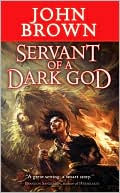Key Conditions for Suspense:
Part 24 – Patterns for Struggle Elements 3 – 5
by John D. Brown
 The following is part of a continuing series. If you wish to start at the beginning, head to It’s All About The Reader.
The following is part of a continuing series. If you wish to start at the beginning, head to It’s All About The Reader.
In my last post, I discussed options for trouble progression. In this post, I’ll discuss options for three more elements that affect the structure of the struggle phase.
Actions the antagonist takes to oppose the hero
Directly related to the progression of trouble are the actions the villain or opposition takes to thwart the hero. I made this its own topic because I’ve found it’s incredibly useful in coming up with great troubles to play the story cycle from both points of view, like a one-man chess game.
Just as I need to know my hero’s goal, motives, and plan, I also need to know the same things about my antagonist. In fact, in some stories the antagonist’s plans are what drive the story.
So my hero takes an action. I switch in my mind to the antagonist’s point of view and ask myself what I would do if I were this villain. How would I react given his goal, motives, and resources? This suggests a course or three of action. I select the one that sparks my interest the most. This action, of course, causes trouble for the hero. So I switch back to the hero’s point of view and ask myself how I would react as the hero. This causes trouble for the villain. So I switch back to the villain’s point of view, and back and forth I go.
In coming up with troubles, it’s sometimes helpful to think of how the antagonist’s actions might escalate. So when the hero pops up, maybe he sends a henchman to give him a stern warning. When that doesn’t work, maybe a smart villain might send the henchman back to quietly remove him. When that doesn’t work, maybe I call in some favors from the chief of police who I have dirt on. When that doesn’t work, maybe I decide to go take the hero’s family hostage. When he comes to save them, I’ll get him then.
Thinking about the situation from the antagonist’s point of view always helps me come up with lots of troubles for my hero. Again, as with all troubles, the one thing you want to keep in mind is that you want the antagonist to gradually escalate the measures used to remove his problem, which translates to a trouble progression for the hero.
Number of plot turns
There are, on average, 40 to 70 or scenes in a novel. Some of these will be reaction scenes, others will be action scenes. Each will usually move the plot forward with a decision, revelation, help, or a troubling result—something that moves us around the plot cycle. We call these plot turns.
Some subset of those scenes will contain major plot turns, huge setbacks or revelations that dramatically change the situation. For example, someone close to the hero may betray him. Or some significant part of the hero’s plan fails. Or the hero learns that he’s totally misunderstood the problem up to this point. Or the hero finally decides to finally overcome his flaw. Or any number of other major events. Other scenes will contain smaller plot turns.
How many major and minor plot turns you have is up to you. There’s no set number.
Number of stories
Furthermore, the scenes and plot turns don’t all have to focus on one problem. Many stories are actually made up of a group of stories—a central story and a bunch of other smaller stories that relate in some way.
One of these subplots might require two scenes to tell, another might require ten, while another might be told by inserting a few paragraphs worth of interaction into scenes that are focused on another problem (think of a love story that progresses as the two characters work on the central problem). In television they call the main story the A story. They call subplots the B and C stories. Sometimes they have D, E, F stories. Sometimes even more. For example, in one episode of Heroes in its first season, I counted eight progressing story lines.
BTW, be careful multiplying story lines. Too many and your story progression will grind to a halt. Usually the A story takes up the majority of the word count and the others add flavor. Look for the patterns of proportion in the stories you like to see what I mean.
The number of stories you have running can affect the sequence of your events. For example, you can start a subplot before, during, or after the presentation of the central problem. So in one story you might start the love story subplot before the villain shows up with the central problem. Or you might insert the love subplot after the villain shows up and let it be the thing that locks the hero into dealing with the problem. Or you might raise the subplot in the same scene as the one where the villain shows up—the hero falls in love with the villain’s henchman.
You can also start subplots during the first half of the central problem’s struggle phase. I don’t know of any stand-alone stories that insert them in the latter part of that phase, as long as it adds to the reader’s experience. As for series, some books introduce smaller plots in the latter parts of the book that carry over into subsequent volumes of the series.
In fact, one way to propel readers to the next book in a series is to raise new possibilities of problems at the end. For example, in Star Wars Luke blows up the Death Star, but we get a brief scene with Darth Vader spinning out of control and then righting his ship.
Whenever the subplots are presented, some of them will be resolved before the resolution of the central problem. Some of them will be resolved after. Some, if you’re writing a series, will be resolved in a book later in the series. All three options can be satisfying.
The key thing to remember here is that the sequence of events in your book is affected by the number of stories you’re telling, the number of plot turns each of those stories has, and where you weave in each of the three problem-solving phases for each of the subplots.
Do you see now why it’s impossible to prescribe ONE sequence or formula of events for every story?
So have you thought about the problem in your current project from the villain’s point of view? How many major plot turns are you going to put your character through? Do you have any subplots? How will you handle the three phases for each of them?
In the next post, I’ll continue to with options for the last two struggle elements.
Happiness,
John
•••
 John Brown is an award-winning novelist and short story writer. Servant of a Dark God, the first book in his epic fantasy series, was published by Tor Books and is now out in paperback. Forthcoming novels in the series include Curse of a Dark God and Dark God’s Glory. He currently lives with his wife and four daughters in the hinterlands of Utah where one encounters much fresh air, many good-hearted ranchers, and an occasional wolf.
John Brown is an award-winning novelist and short story writer. Servant of a Dark God, the first book in his epic fantasy series, was published by Tor Books and is now out in paperback. Forthcoming novels in the series include Curse of a Dark God and Dark God’s Glory. He currently lives with his wife and four daughters in the hinterlands of Utah where one encounters much fresh air, many good-hearted ranchers, and an occasional wolf.
For a list of all of the posts in this series thus far, click on the “John D. Brown” tag.


